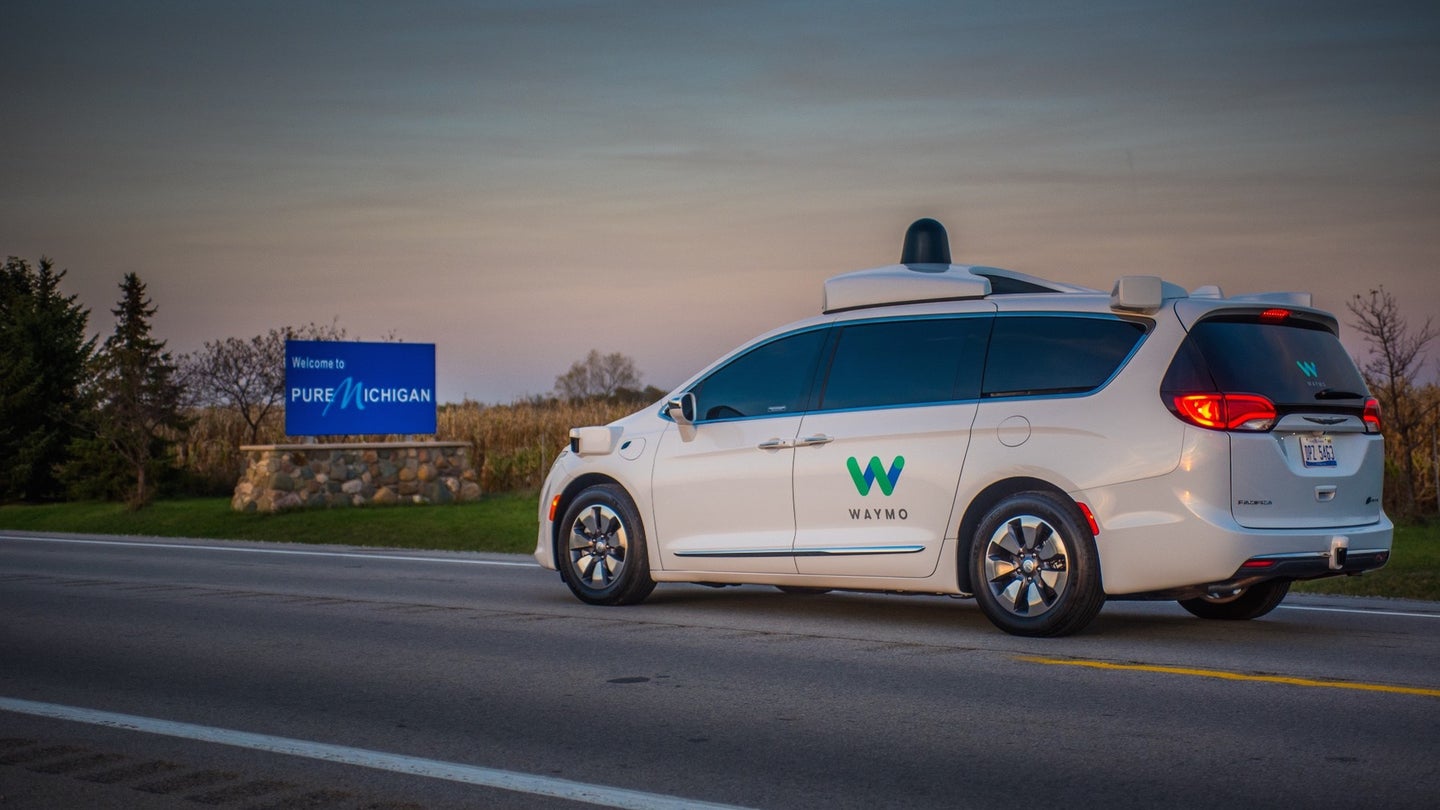Google Axed Autopilot Feature After Catching Drivers Sleeping Behind the Wheel
Distracted driving is a big problem, even for self-driving cars.

Google's parent company, Alphabet, has determined that it is no longer viable to continue developing some semi-autonomous features that require interaction from drivers for its Waymo program, reports Reuters. Though some drivers may have been able to take control in a dangerous situation, others made the situation worse by performing distracting tasks, or in some cases, even taking naps.
As part of its autonomous driving test pilot, Waymo launched both real world and virtual playgrounds for its fleet of self-driving cars that enabled cars to learn the equivalent of 8 million miles of driving every single day. In the real-world applications, drivers were stationed in the vehicle so that Waymo was compliant with local laws, as well as acting in a safe manner should an emergency arise.
The solution to alert a driver to take control was to play a noise, which indicated to the driver that they needed to take control. Other manufacturers with vehicles on the road already do this, but it has proven to be ineffective at times. In Waymo's case, its ineffectiveness was viewed as a pivoting point on just where to focus manpower on development.
Drivers behind the wheel were performing tasks which, if performed without a self-driving car, could have easily resulted in an accident. Some drivers put on makeup, while others played with their phones as the car barreled down the road at highway speeds. One driver even went as far as taking a nap while the car continued its journey. Not long after staff observed the driver sleeping was when Waymo made the decision to focus on making riders in the vehicles truly passengers, and not drivers.
"What we found was pretty scary," said John Krafcik, Waymo boss. "It's hard to take over because [the drivers] have lost contextual awareness."
It's unclear whether the test drivers are overestimating what the test vehicles are capable of, or if they have already become complacent with the extra eyes on the road. The former Google subsidy recently released a campaign which targeted self-driving skeptics, reassuring them that everything would be okay. In reality, if drivers of traditional cars knew that those in self-driving machines were paying less attention, it may take a lot more convincing than just a commercial and free car rides.
An autonomous future is coming our way, however, there may be a time where companies will need to be very adamant on deciding how to handle distracted driving for anything under level 4 autonomy. Eventually, manufacturers have a long-term goal of letting drivers read a book or use the phone while driving, but that's quite a while away.
